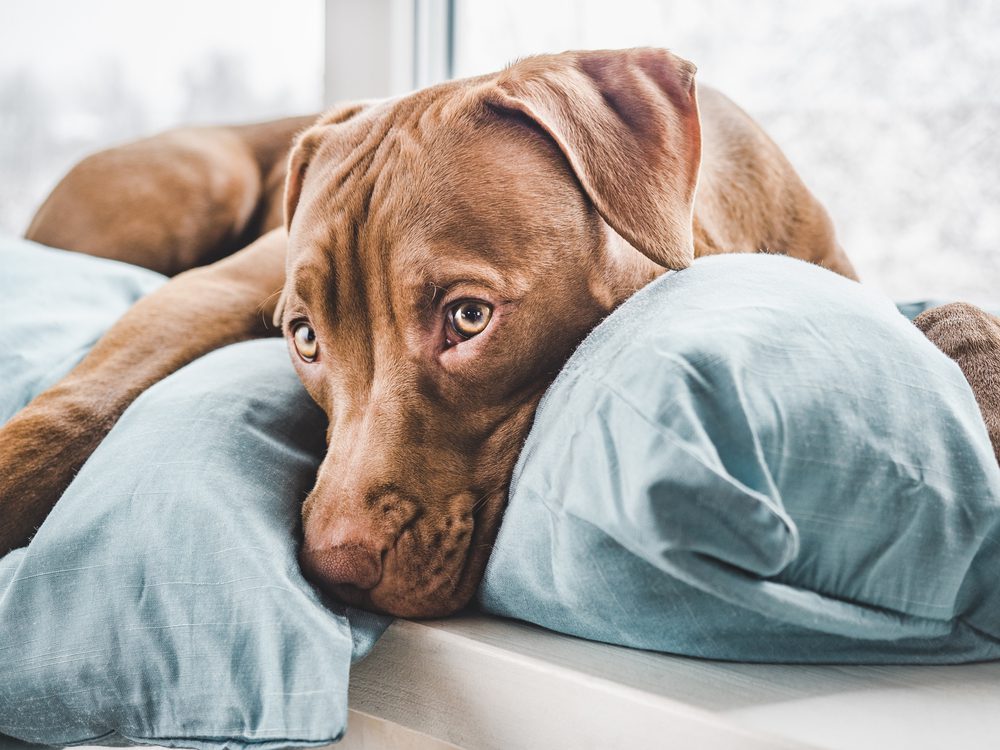
4. Separation anxiety
There is a thin line between what a clingy dog is, compared to one that suffers from separation anxiety. In the first case, your pup might be sad that you’re not at home to play fetch with them or pet them, but they don’t panic when you’re not there. In the second case, when you’re away from your pooch for a longer period of time, they might go into panic mode until you come back to them.
You sure heard about dogs that were left home alone by their owners and got so mad and anxious, that they started to destroy things in the house, such as sofas, shoes, or even doors. That is separation anxiety. They got so much in their heads, that they didn’t know what was good and what was bad anymore.
Here’s What You Can Do About Your Velcro Pup
- stimulate their minds – when your dog is bored, they are more likely to become clingy just because they don’t have anything better to do. So keep their minds occupied by playing with them, giving them toys, and make sure to encourage them to play by themselves, so that they won’t get mad or anxious when you’re not around;
- increase the time spent exercising – if your pup is tired and all they want to do is doze off, they won’t have enough energy to follow you everywhere you go. So take them outside, play fetch, run with them, or take them out for a walk throughout the day. It will also do wonders for their health, so it’s a win-win!;
- dissociate your dog from your actions – your dog knows you pretty well and they’ve surely learned some of your actions. If you usually go to the kitchen and take the food or their treats out, they will remember it. Also, if you usually get your keys and head out the door, they will know it as well. To “normalize” all these actions, practice them without actually doing the things you usually do. If you go to the kitchen, for instance, don’t give them treats, but start cleaning or taking the trash out instead. Or grab the keys and get comfy on the couch, instead of leaving the house. Eventually, your pup will learn that your actions don’t always mean the same thing and they’ll understand that your movements don’t require their attention that much.
- create a special space for them – set up a space that is just for your pooch (with their favorite toys and even a blanket, if they have one), so they go there instead of following you everywhere you go. Train your pup to go to that area and give them a treat when they do it.
…If you find this article interesting and helpful, we have plenty more just like that! Check this one out as well: 10 Amazon’s Inexpensive Pet Supplies (Under $21)!














